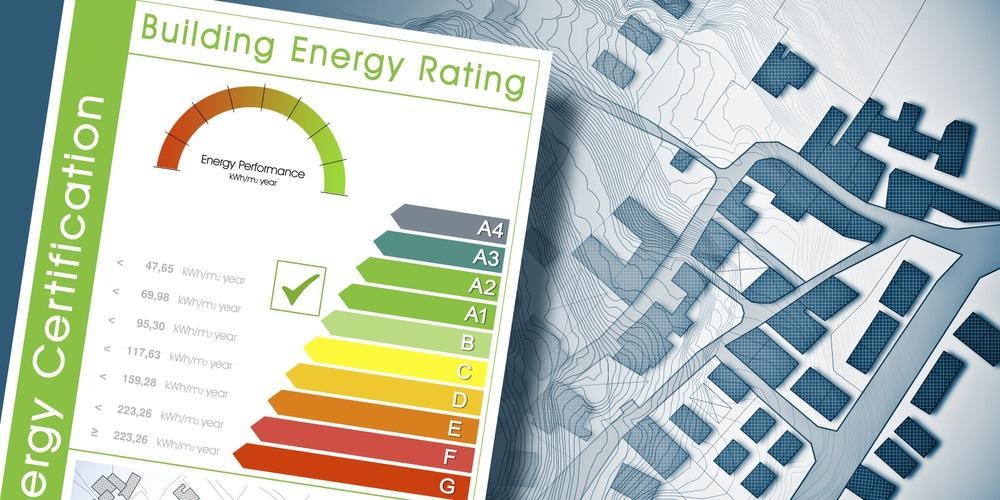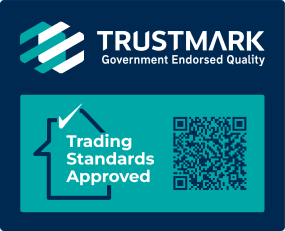Optimising Business Energy Consumption:
In today’s business landscape, energy consumption is a significant expense for companies of all sizes. In addition to the financial impact, excessive energy usage also has negative consequences for the environment.  As a result, businesses are increasingly seeking ways to optimise their energy consumption and improve overall efficiency. One key tool in this endeavour is the Commercial Energy Performance Certificate (EPC), which provides valuable insights into a building’s energy usage. By implementing strategies based on these insights, businesses can not only reduce costs but also demonstrate their commitment to sustainability. This article explores the importance of energy performance and offers practical strategies for greater efficiency.
As a result, businesses are increasingly seeking ways to optimise their energy consumption and improve overall efficiency. One key tool in this endeavour is the Commercial Energy Performance Certificate (EPC), which provides valuable insights into a building’s energy usage. By implementing strategies based on these insights, businesses can not only reduce costs but also demonstrate their commitment to sustainability. This article explores the importance of energy performance and offers practical strategies for greater efficiency.
The importance of minimising business energy consumption
In today’s competitive business environment, minimising energy consumption has become more important than ever before. Not only does excessive energy use make a significant dent in a company’s bottom line, but it also contributes to environmental degradation. By adopting an energy-efficient approach, businesses can not only reduce costs but also enhance their reputation as responsible corporate citizens.
Minimising energy consumption also has a positive impact on the overall productivity and profitability of a business. By optimising energy usage, companies can improve the lifespan and performance of their equipment, resulting in reduced maintenance and replacement costs. Moreover, an energy-efficient workplace promotes a healthier and more productive working environment for employees, leading to increased employee satisfaction.
In the next section, we will explore practical strategies that businesses can implement to achieve greater efficiency and savings in their energy consumption. By adopting these strategies, companies can not only reduce their carbon footprint but also gain a competitive edge in the market. Stay tuned!
Assessing your current energy usage
Assessing your current energy usage is a crucial step in optimising your business’s energy consumption. It provides you with valuable insights into where you can make improvements and identify areas of potential inefficiency.
Start by conducting a comprehensive energy audit of your workplace. This involves analysing your energy bills, equipment usage patterns, and identifying any energy-intensive processes. Understanding your baseline energy usage will allow you to set realistic goals for reducing consumption.
Consider implementing energy monitoring systems that provide real-time data on energy usage. These systems can help you identify energy spikes, inefficient equipment, and areas where energy-saving measures can be implemented.
Additionally, engage your employees in the process by encouraging them to identify energy-saving opportunities. They often have valuable insights and suggestions to reduce energy consumption on a day-to-day basis.
By assessing your current energy usage, you can lay the foundation for implementing effective energy-saving strategies. In the next section, we will delve into specific measures you can take to achieve greater efficiency and savings in your business’s energy consumption. Stay tuned to learn more!
Implementing energy-efficient equipment and technology
Now that you have assessed your current energy usage and have identified areas for improvement, it is time to implement energy-efficient equipment and technology to further optimise your business’s energy consumption.
Consider replacing outdated and energy-consuming equipment with more energy-efficient alternatives. Look for products with ENERGY STAR certification or other energy efficiency ratings to ensure that you are making the best choices for your business. Upgrading to energy-efficient lighting, such as LED bulbs, can also make a significant impact on your energy consumption.
Exploring the use of smart technology can also contribute to energy savings. Smart thermostats, for example, allow you to control the heating and cooling of your workspace, ensuring that energy is only used when necessary. Automation systems can also be employed to schedule equipment usage and reduce standby power.
Investing in energy-efficient equipment and technology may require some upfront costs. However, the long-term energy savings and potential tax incentives can make it a worthwhile investment for your business. In the next section, we will explore other strategies for optimizing your business’s energy consumption. Stay tuned for more valuable insights!
Maximising natural lighting and ventilation
Maximising natural lighting and ventilation is another effective strategy for optimising your business’s energy consumption. By harnessing natural light, you can reduce your reliance on artificial lighting during the day, thereby saving energy.
To maximise natural lighting, make sure to keep windows clean and unobstructed. Consider using light-coloured or reflective surfaces on walls and ceilings to bounce natural light deeper into the space. Additionally, skylights or solar tubes can be installed to bring in even more natural light.
In terms of ventilation, proper airflow can help regulate your indoor temperature and reduce the need for air conditioning. Make sure your windows and doors are properly sealed to prevent air leakage. Consider using fans or installing ventilation systems to circulate fresh air throughout your workspace.
By maximising natural lighting and ventilation, you can create a more comfortable and energy-efficient environment for your business. In the next section, we will discuss the importance of employee engagement in optimising energy consumption. Stay tuned for more insights on how to effectively involve your employees in this process.
Educating employees on energy-saving practices
Engaging employees in energy-saving practices is crucial for optimising your business’s energy consumption. By educating your workforce on the importance of energy conservation and providing them with practical tips, you can empower them to become active participants in your sustainability efforts.
 Start by organising training sessions or workshops to raise awareness about energy-saving practices. Teach them how small changes like turning off lights and equipment when not in use or adjusting thermostats can make a significant impact on reducing energy consumption.
Start by organising training sessions or workshops to raise awareness about energy-saving practices. Teach them how small changes like turning off lights and equipment when not in use or adjusting thermostats can make a significant impact on reducing energy consumption.
Encourage employees to take ownership of their energy usage by implementing an incentive program. Recognize and reward individuals or teams that consistently demonstrate energy-saving behaviours. This not only fosters a sense of responsibility but also promotes a positive and sustainable work culture.
Remember, employees are the backbone of your organisation, and their involvement in energy-saving initiatives can have a substantial impact on your overall energy consumption. Stay tuned for the next section where we will explore the benefits of investing in energy-efficient equipment.
Monitoring and benchmarking energy usage
Monitoring and benchmarking energy usage is a critical step in optimising your business’s energy consumption. By tracking your energy usage regularly, you can identify areas of high consumption and implement strategies to mitigate them. This will not only help you reduce wastage but also save on energy costs.
Start by installing energy monitoring devices or software that can track and analyse your energy usage in real-time. This will provide you with accurate and up-to-date information about your consumption patterns and help you identify any anomalies or inefficiencies.
Additionally, benchmarking your energy consumption against industry standards or similar businesses can provide valuable insights. It allows you to compare your performance, set realistic goals, and identify opportunities for improvement.
By consistently monitoring and benchmarking your energy usage, you can identify trends, track progress, and make data-driven decisions to further optimise your business’s energy consumption. In the next section, we will explore the benefits of adopting renewable energy sources. Stay tuned!
Investing in renewable energy sources
Investing in renewable energy sources is an effective strategy for optimising your business’s energy consumption and reducing your carbon footprint. Renewable energy sources, such as solar panels or wind turbines, harness naturally occurring energy and convert it into usable electricity.
By utilising renewable energy, your business can significantly reduce its reliance on fossil fuels and decrease greenhouse gas emissions. This not only contributes to a cleaner environment but also allows you to take advantage of various incentives and government programs that promote the use of renewable energy.
Moreover, investing in renewable energy can provide long-term financial benefits. While the initial installation costs may be higher compared to traditional energy sources, the long-term savings on energy bills can offset this investment. Additionally, by generating your own renewable energy, you can even sell excess electricity back to the grid, creating an additional revenue stream.
In the following section, we will explore different ways to incorporate renewable energy sources into your business operations. Stay tuned to discover how you can take advantage of the numerous benefits renewable energy offers.
Continuously improving energy efficiency strategies
Continuously improving energy efficiency strategies is a crucial aspect of optimising your business’s energy consumption. Even if you have invested in renewable energy sources, there are still ways to enhance your energy efficiency further.
One effective strategy is to conduct regular energy audits to identify areas of potential energy waste or inefficiency. By analysing your energy usage patterns and identifying opportunities for improvement, you can implement energy-saving measures that align with your business needs. This may include upgrading to more energy-efficient equipment or optimising your building’s insulation and lighting systems.
Another strategy is to educate your employees about energy-saving practices and encourage them to adopt energy-efficient habits. Simple actions like turning off lights when not in use, using natural lighting whenever possible, and utilising power-saving modes on electronic devices can significantly reduce energy consumption.
By continuously evaluating and improving your energy efficiency strategies, you can minimise energy waste, reduce costs, and achieve greater sustainability for your business. Stay tuned for the next section as we delve into specific energy-saving measures you can implement in your workplace.
The benefits of optimising business energy consumption
In conclusion, optimising your business’s energy consumption not only contributes to a more sustainable future but also brings several benefits to your organisation. By implementing energy-efficient strategies, you can significantly reduce your energy costs and potentially increase your profit margins. Moreover, minimising energy waste helps to decrease your carbon footprint and enhance your company’s reputation as an environmentally responsible entity.
Furthermore, prioritising energy efficiency can also lead to improved productivity and employee satisfaction. By fostering a culture of energy conservation and providing training on energy-saving practices, you can empower your employees to contribute to the overall efficiency of your business operations.
In the next section, we will explore specific energy-saving measures that are applicable to various industries and provide practical steps to implement these strategies within your workplace. Stay tuned for our comprehensive guide on optimising business energy consumption.




